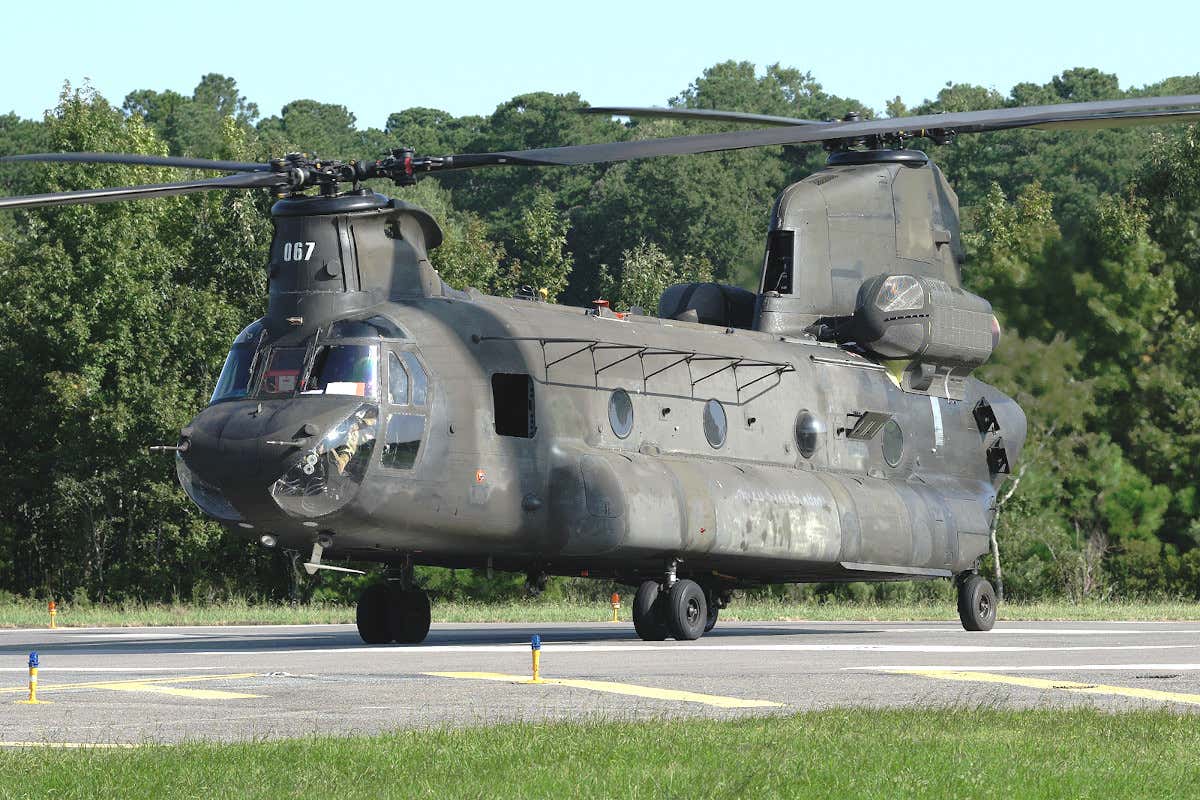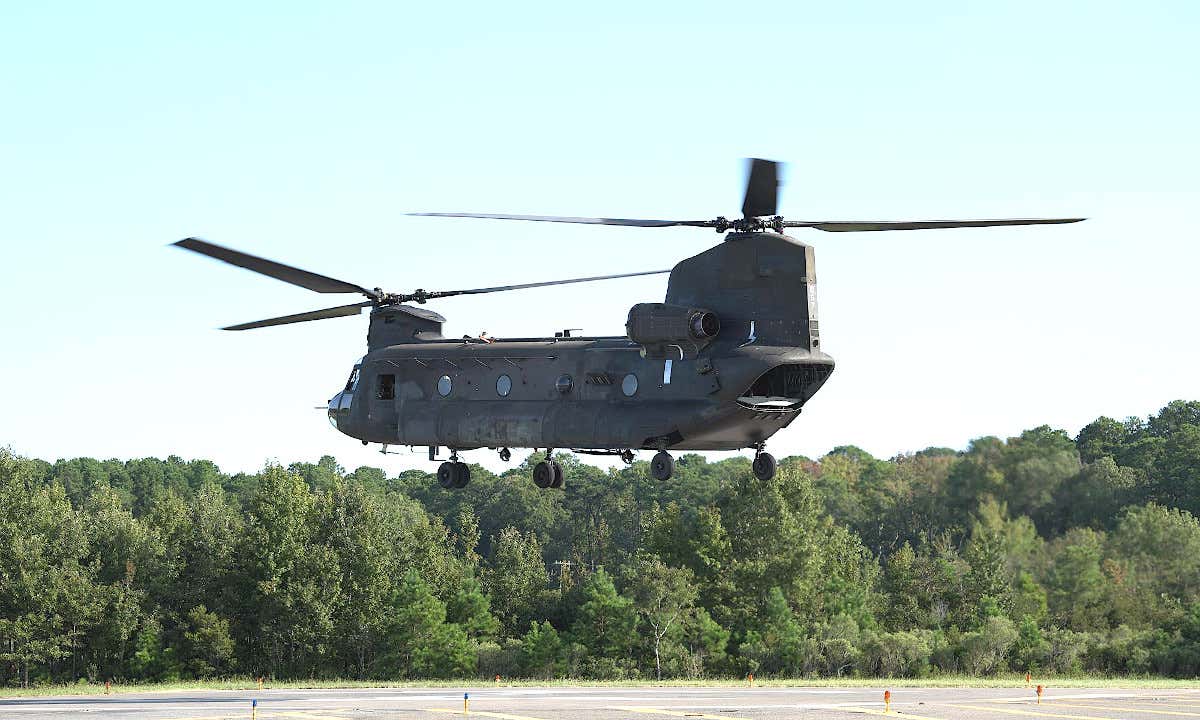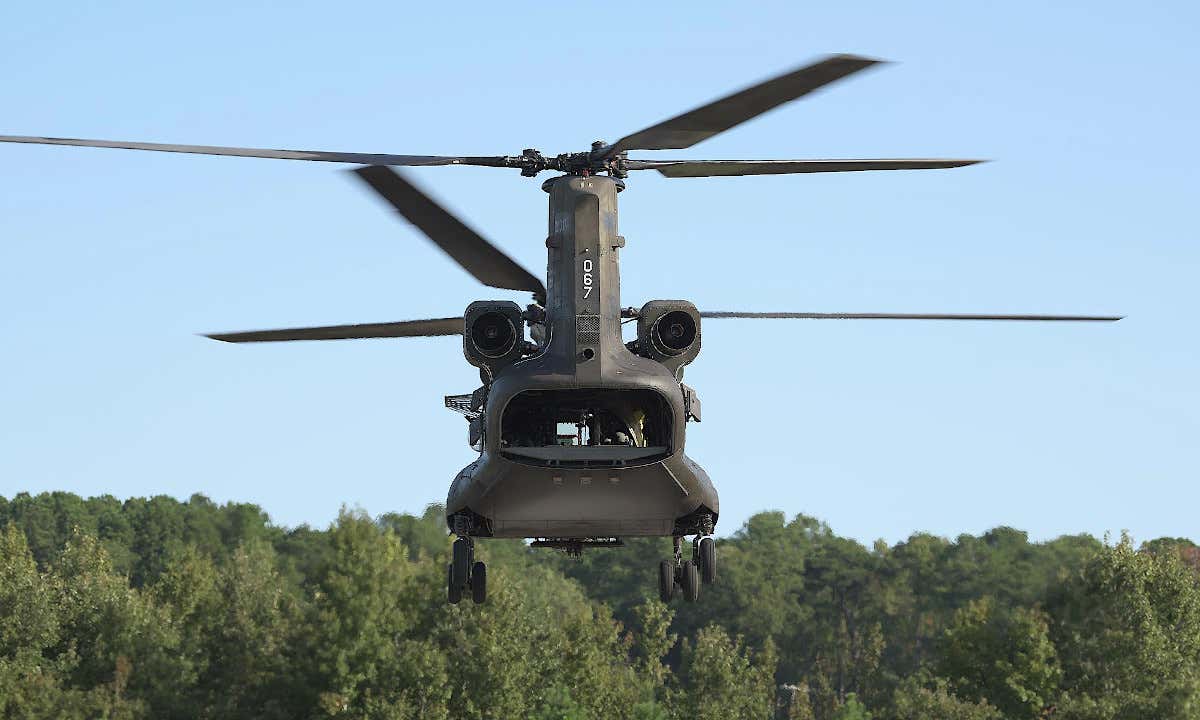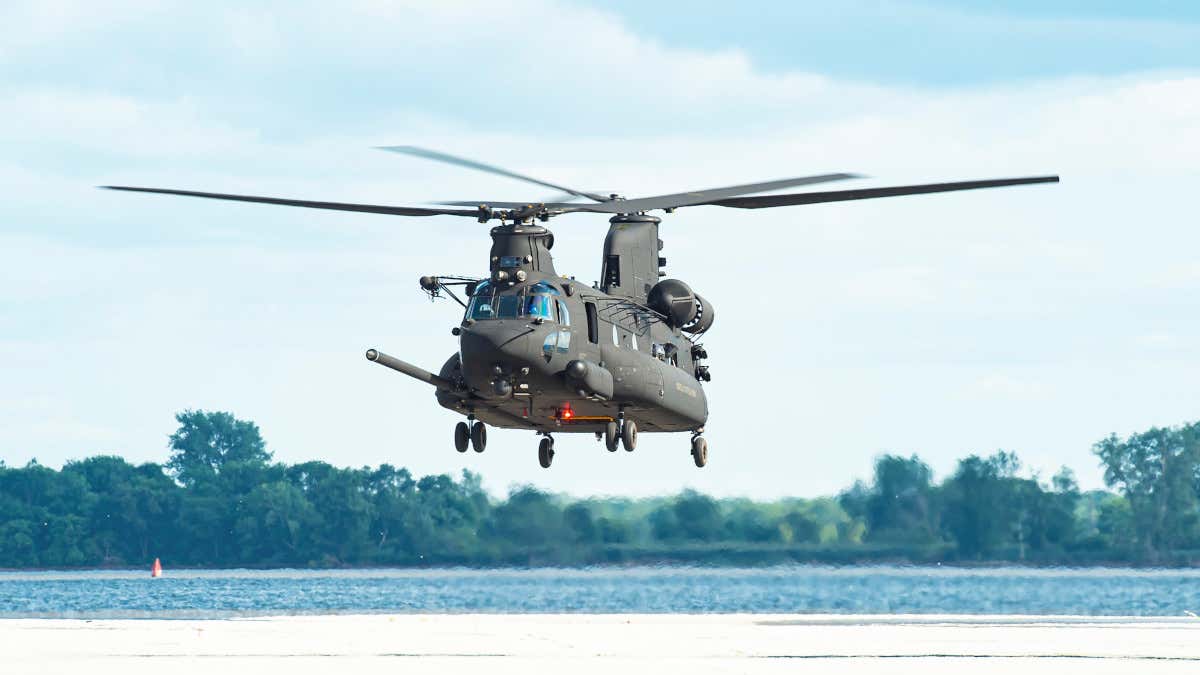Boeing, in cooperation with the U.S. Army, has flown a CH-47 Chinook powered by two General Electric T408 engines, the same ones found on Sikorsky's larger CH-53K King Stallion, for the first time. Pictures first emerged of this modified helicopter undergoing ground testing last year. These engines could give the type significantly greater performance.
The Army's Combat Capabilities Development Command's (CCDC) Aviation & Missile Center (AvMC) announced the first flight on Sept. 22, 2020. The command said that this test, which included hover and pedal turn maneuvers, of the NCH-47D testbed helicopter was conducted from Felker Army Airfield. part of Fort Eustis in Virginia.
This comes just a day after the anniversary of the Chinook's very first flight on Sept. 21, 1961. Variants of the helicopter have been in continuous production for more than five decades now and the design continues to evolve, including with the addition of the T408 engines.
“The CCDC AvMC mission is to conduct innovative research, development, and engineering in order to provide new capabilities for our aviation warfighters, and the T408 program is a great example of this,” Army Colonel Justin Highley, head of the Aviation Technology, Systems Integration, and Demonstration arm of AvMC's Technology Development Directorate, said in a statement, according to Vertical magazine. "Integrating a new engine onto a production aircraft is a huge undertaking, but our combined team did a great job moving the program from an engineering concept to flight test, which is a testimony to the capabilities the AvMC team brings to our soldiers."
Official pictures from the flight offer the first full view of the new, more square-shaped engine nacelles that are necessary to house the T408s, which are larger than the Honeywell Aerospace T55 engines found on existing Chinooks. The new engines are also heavier and, as a result, the pylons that attach them to the rear fuselage have been reinforced. There are additional reinforcing bars between the nacelles themselves and rear fuselage, as well.

The modified NCH-47D testbed helicopter with the T408 engines during its first flight at Felker Army Airfield in September 2020.


Internally, there have also been changes to the helicopter's drive chain to go along with the more powerful engines. Boeing also installed an off-engine torque measurement system from the Parker LORD Corporation on the NCH-47D.
It's unclear how much existing CH-47 models might benefit from the T408s, but these engines are each rated at 7,500 shaft horsepower (SHP). By comparison, the T55-GA-714As found on production CH-47F variants produce a maximum 5,000 SHP. Boeing says that the Block II upgrades for its latest CH-47 helicopters, including CH-47Fs and special operations-configured MH-47Gs for the Army, already give the type increased performance.

The first Block II MH-47G, which Boeing delivered to the US Army in 2020.
The Block II improvements were originally developed for the Army and included initial work to pave the way for the integration of improved engines in the future. Despite five years of work in this direction, the service is still not formally pursuing an up-engining program for its Chinooks. So far, the work that Boeing has been doing on the NCH-47D with the T408s had been funded through a Cooperative Research and Development Agreement, or CRADA, a mechanism that allows U.S. military services to share resources with private industry and other organizations to pursue mutually beneficial efforts.
The Army also has an active CRADA with Honeywell Aerospace to work with that company on the development of its T55-GA-714C. That engine is rated at 6,000 SHP and also reportedly has 10 percent greater fuel efficiency over the T55-GA-714A. Though less powerful, Honeywell Aerospace is promoting this as an alternative to the T408, adding that its new T55 design requires virtually no airframe changes and fewer internal modifications.
Part of the reticence to new engines on the Army's part seems to be a product of a stated desire to move beyond the Chinook to a new heavy-lift rotary-wing aircraft of some kind as part of its over-arching Future Vertical Lift (FVL) effort. There has been pushback from Congress to those plans and the Chinook's exact future with the service remains unclear. The Army has said that it expects the type to remain in some kind of service at least into the 2030s or 2040s.
Still, the CH-47F is still very much in production, with India receiving its first examples last year. Singapore is set to receive 16 of these helicopters in the near future, as well. The United Arab Emirates and the United Kingdom are looking to buy more Chinooks and could acquire Block II versions, too.
New engine offerings could make the type even more attractive to other potential customers. Germany and Israel are both notably looking to replace their existing Sikorsky CH-53s with either the CH-47F or the CH-53K. Boeing could very well offer an engine upgrade package to existing Chinook operators, as well, as a relatively low-cost way to boost the capabilities of their fleets.
Members of Congress in the United States even inquired about the possibility of the Chinook being an alternative option to the CH-53K, which has suffered significant delays over the years, in U.S. Marine Corps service. However, the Marines have stood by the King Stallion, which has seen significant progress is rectifying technical issues in recent years, and are moving ahead with putting that helicopter into service.
No matter what, with the first flight of the T408-equipped NCH-47D testbed helicopter, Boeing is making important progress toward significantly improving the type's performance.


